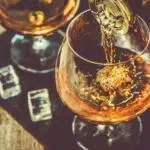National Armagnac Day is celebrated each year on December 21. It’s a day dedicated to a distinctive kind of brandy produced in the Armagnac region in Gascony, southwest France. Armagnac was one of the first areas in France to begin distilling spirits. Made from a blend of grapes, including Baco 22A, Colombard, Folle blanche, and Ugni blanc, production is overseen by the Institut national de l’origine et de la qualité and the Bureau National Interprofessionnel de l’Armagnac (B.N.I.A.).
History of National Armagnac Day
Armagnac is a centuries-old white-wine-based liquor distilled once in an alembic column and aged in oak barrels. In the past, it was used for its perceived health benefits. Between the 15th and 17th centuries, it could be found in the markets of Saint-Sever, Mont-de-Marsan, and Aire-sur-l’Adour. Later on, Dutch merchants could trade it on a much larger scale. The majority is still produced by family-owned, small-scale operations that take pride in their unique versions of the spirit and its link to the culture of Gascony. Until recently, Armagnac was primarily consumed in France. Once international consumers discovered it, the export markets grew by around 50%.
Young Armagnac has notes of apricots, prunes, and plums. As they age in Gascony oak casks, its higher tannin content infuses the spirit more quickly. Aged or older Armagnac has a darker color. The robust flavors of smoke, nuts, dates, butterscotch and caramel also come through.
It’s generally enjoyed as an after-dinner liqueur, served neat, at the end of a meal. Ideally, it’s best to drink at room temperature or warmed in your hands before consuming. Use a small glass with a narrow rim to ensure aromas are concentrated. It pairs well with cold meats, smoked salmon, caviar, and foie gras. Young Armagnacs can be used to flambé shellfish, meats, and sauces. A splash of Armagnac is a delightful substitute for vinegar when making a vinaigrette. It also goes well with blue-veined cheeses such as Roquefort and Fourme.
National Armagnac Day timeline
Prior Vital du Four, a Franciscan theologian and scholastic philosopher, writes about its 40 virtues.
The Armagnac vineyards suffer from phylloxera, a microscopic louse infestation, and out of 100,000 hectares, only a quarter is replanted.
The B.N.I.A. is created to group independent or cooperative producers of aging and trading, distillers, and brokers.
French President François Mitterrand’s last meal is a rare dish called Ortolan, a small bird drowned in Armagnac before cooking.
National Armagnac Day FAQs
Does Armagnac get better with age?
It’s important to choose one from a good producer. Usually, the older the Armagnacs, the more complex and expensive they become.
How long will Armagnac last?
A sealed bottle can last for years, but the cork or closure should be changed every five to 10 years. If opened, it can only keep for one to two years, as the oxidation due to air entering the bottle can change the taste.
Is Armagnac a Cognac or brandy?
Armagnac is a brandy produced solely in the Armagnac region in Gascony, Southwest France. Only a wine brandy produced in the Cognac region can be called Cognac.
National Armagnac Day Activities
Look into its history
Armagnac may not be as popular a brandy as, say, Cognac, but it's well-loved by connoisseurs. Delve into its origins and discover why those in the know favor it.
Savor a glass-or two
The traditional way to enjoy it is as an after-dinner liqueur. It can also be made into a cocktail when mixed with still or carbonated water, fruit juice, or soda.
Cook with it
Use it to flavor pastries, make preserves, and spice up sauces and marinades. For added drama in the kitchen, use it to flambé sweet or savory dishes like desserts and poultry.
5 Ways Armagnac Is Different From Cognac
Single versus double-distilled
Armagnac is distilled in an alembic continuous still, while Cognac is double-distilled in a copper pot still.
Armagnac is older than Cognac
Production started at least 200 years before Cognac.
Size of production
Small producers make Armagnac, while big-name brands produce Cognac.
Armagnac has more alcohol content than Cognac
Armagnac usually has 46 to 48% A.B.V., while Cognac is at least 40% A.B.V.
Armagnac tastes stronger than Cognac
The flavor of Armagnac is more complex and robust, while Cognac is more subtle and gentle.
Why We Love National Armagnac Day
Armagnac is still produced by family-run establishments
Château de Lacquy and Maison Castarède are some examples of family-run makers of Armagnac. Keeping it ‘in the family’ enables them to have better control of the production, such as its distillation and aging.
Armagnac is a niche product
Almost everyone is familiar with its more popular ‘cousin,’ the Cognac. Only a select few can say that they know of its many virtues. That makes this spirit even more special.
Armagnac may help digestion
There’s a reason it’s a popular after-dinner drink. It’s a digestive liqueur that may aid in digesting your meal.
National Armagnac Day dates
| Year | Date | Day |
|---|---|---|
| 2025 | December 21 | Sunday |
| 2026 | December 21 | Monday |
| 2027 | December 21 | Tuesday |
| 2028 | December 21 | Thursday |
| 2029 | December 21 | Friday |





















